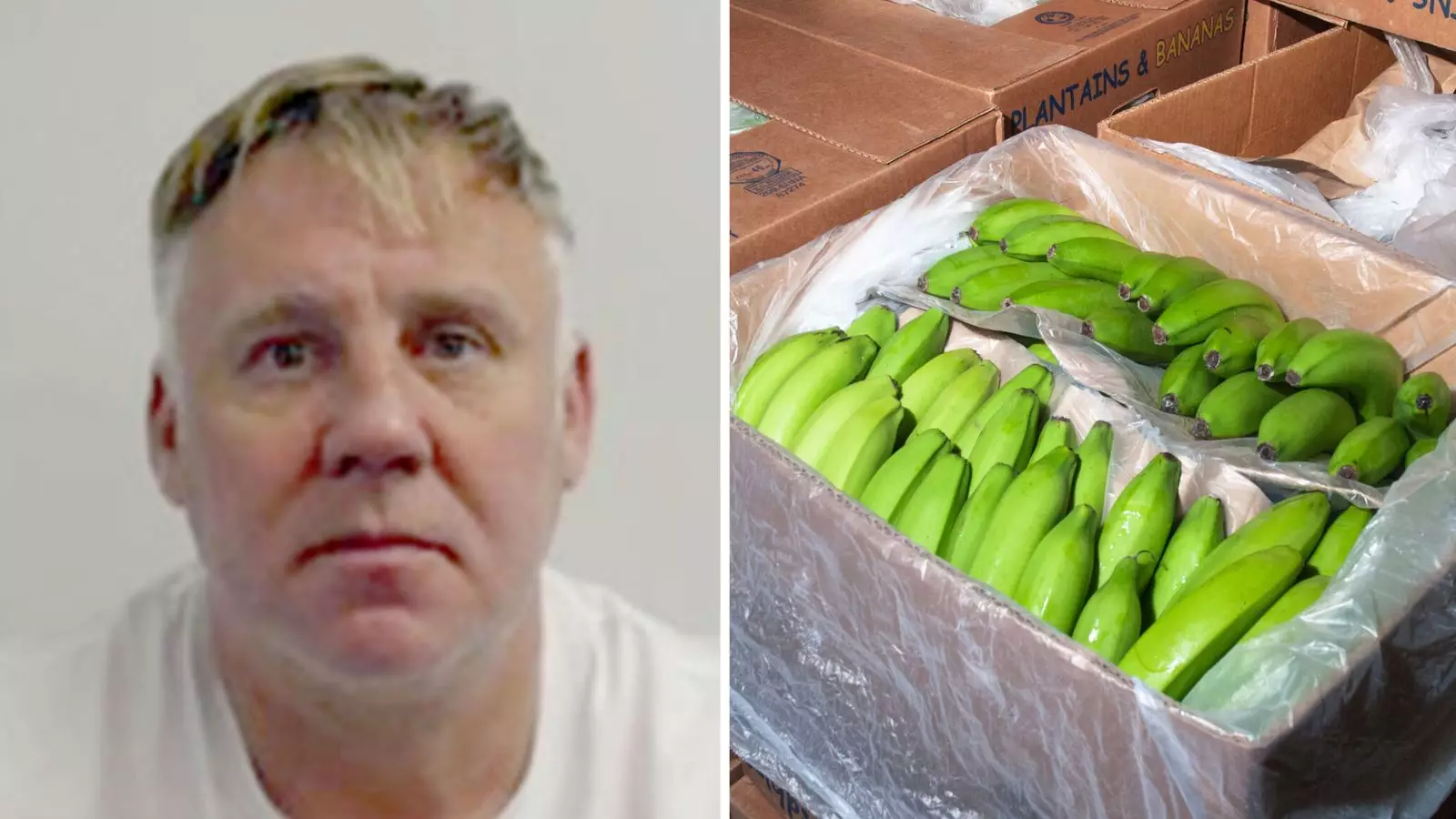In a significant blow to organized crime in the United Kingdom, Jamie Stevenson, infamously dubbed the “Iceman,” was sentenced to 20 years in prison following his role in orchestrating a vast cocaine smuggling operation from South America to Scotland. What makes this case particularly alarming is not only the quantity of drugs—nearly a tonne—but also the audacity with which the operation was conducted, with cocaine hidden within a seemingly innocuous cargo of bananas. The seizure of the drugs, valued at an estimated £100 million, took place in September 2020 at the Dover border, marking a pivotal moment in the ongoing battle against drug trafficking.
Stevenson’s intricate plot would not have been possible without the elaborate framework established by his organization, which was sophisticated enough to blend seamlessly into the legal fruit trade. Authorities traced the shipment back to a fruit merchant in Glasgow, signifying the alarming intersections between legitimate business and the dark world of drug trafficking. This case serves as a grim reminder of how organized crime can manipulate legitimate industries to achieve criminal ends, posing serious questions about regulatory oversight and enforcement efficacy.
Law Enforcement’s Strategic Operations
The investigation, known as Operation Pepperoni, was a cooperative effort involving Police Scotland and the National Crime Agency (NCA). This operation was part of a broader initiative targeting organized crime, indicating a revitalized strategy by law enforcement to dismantle networks of drug trafficking fueled by sophisticated technology, including the encrypted communications platform EncroChat. This vital tool, which allowed criminals to communicate without interception, was the basis of a series of investigations and subsequent arrests as law enforcement agencies began to peel back the layers of criminal collaboration.
Insights from law enforcement leaders, like Graeme Pearson, the director general of the Scottish Crime and Drug Enforcement Agency during initial investigations, highlighted Stevenson’s entrenched position within the organized crime landscape. The analogy drawn between Stevenson’s operations and the dealings of mafias depicted in popular culture highlights an unsettling truth: organized crime can be disturbingly organized, mimicking legitimate corporate structures while pursuing illicit profits.
Stevenson’s criminal history is sordid and expansive, dating back to previous convictions, including money laundering in 2007—an act that led to comparisons with the fictional kingpin Tony Soprano from the television series “The Sopranos.” Such similarities raise critical discussions about how media representations of criminal masterminds can sometimes trivialize the serious implications of real-life organized crime. Unlike entertainment, the consequences of such operations reach far beyond any screen, impacting lives and communities across the UK.
Moreover, Stevenson’s links to the production and supply of etizolam, a drug commonly referred to as “street valium,” further underscores the multi-faceted nature of his enterprise. The recent findings of illegal drug manufacturing sites in Kent highlighted the pervasive spread of such operations, indicating that Stevenson’s influence reached well beyond just cocaine trafficking. The ramifications of this are chilling, suggesting an organized framework catering to various aspects of drug distribution, all operating under the radar of potential scrutiny.
The fallout from Stevenson’s actions has cascaded down to several co-defendants, all implicated in various drug-related offences and receiving sentences that reflect the seriousness of their crimes. The collective sentences reflect a broader societal concern regarding drug abuse and organized crime, pushing discussions about rehabilitation, prevention, and the importance of supporting law enforcement in their ongoing efforts.
Moreover, Stevenson’s capture after being named one of the UK’s most wanted men raises questions about modern policing techniques in tracking down fugitives and the effectiveness of international collaboration in addressing organized crime. His arrest in the Netherlands while out jogging demonstrates how dynamically criminal activities can unfold and the challenges of managing these operations internationally.
As Stevenson begins his lengthy prison sentence, the question remains: how can society better combat organized crime and its numerous iterations? This case epitomizes the necessity of strategic law enforcement initiatives complemented by robust regulatory frameworks to prevent the guise of legality from serving as a cover for illicit activities. Continued collaboration between national and international law enforcement agencies, alongside community engagement, will be crucial in dismantling the networks that fuel such crime.
The downfall of Jamie Stevenson serves as both a cautionary tale and a rallying point for authorities fighting the pervasive threat of organized crime. It underscores the need for vigilance and innovation in identifying and addressing the tactics employed by criminal enterprises that continually seek to exploit vulnerabilities in modern society.

Leave a Reply